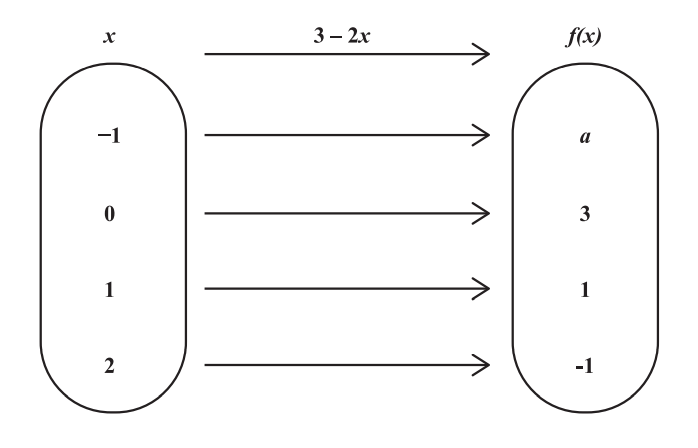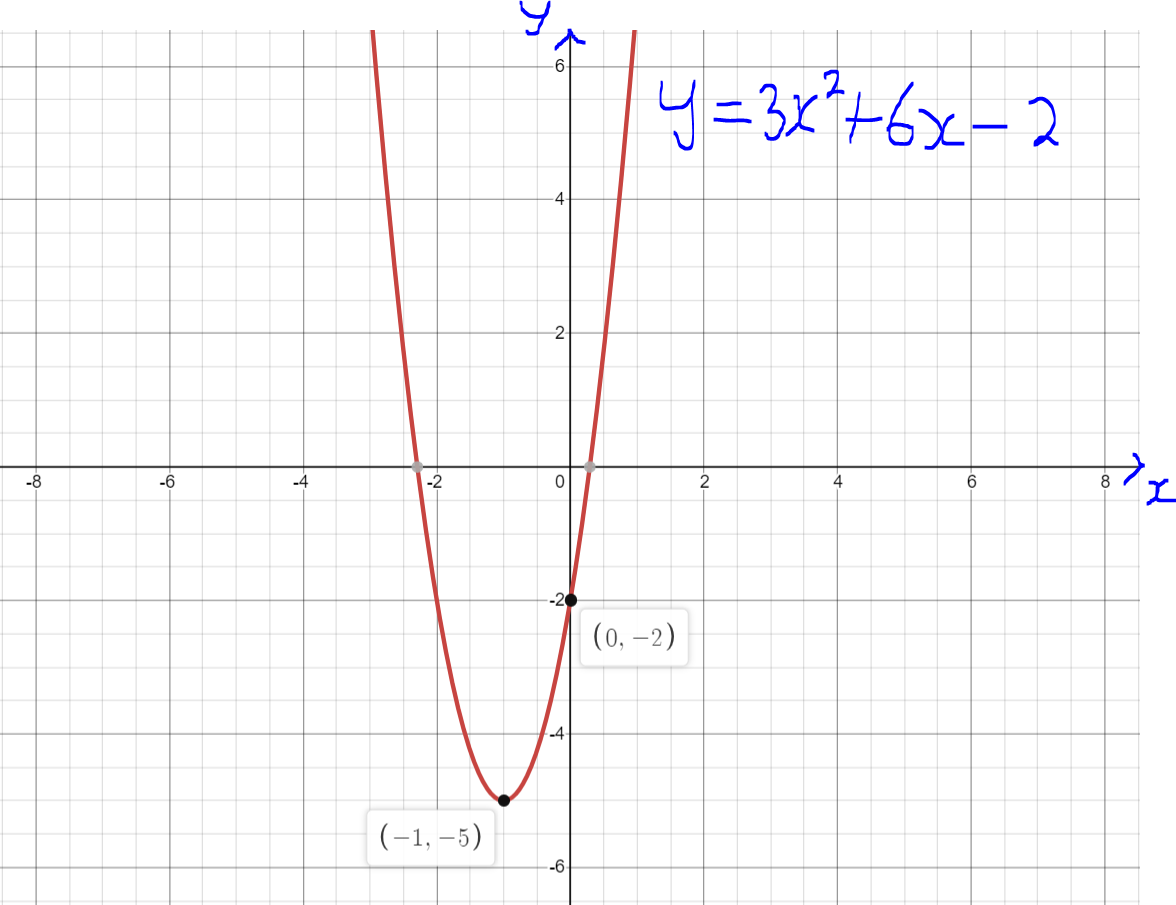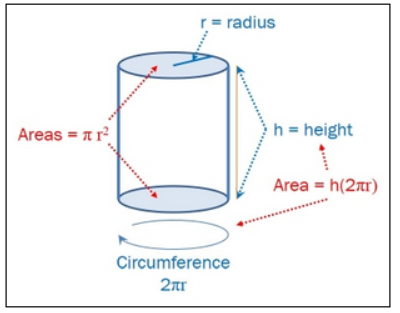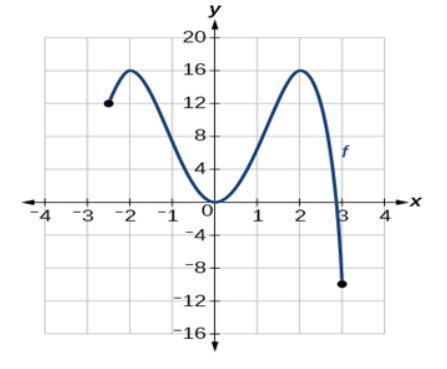(3.) Let P = (x, y) be a point on the graph of y = x² − 4
(a.) Express the distance d from P to the origin as a function of x
(b.) What is d if x = 0?
Round to two decimal places as needed.
(c.) What is d if x = 1?
Round to two decimal places as needed.
(d.) Use a graphing utility to graph d = d(x).
For what positive value of x is d smallest?
Round to two decimal places as needed.
$ (a.) \\[3ex] From\;\;P(x, y) \;\;to\;\;Origin(0, 0) \\[3ex] x_1 = x \\[3ex] y_1 = y \\[3ex] x_2 = 0 \\[3ex] y_2 = 0 \\[3ex] d = \sqrt{(x_2 - x_1)^2 + (y_2 - y_1)^2} \\[3ex] = \sqrt{(0 - x)^2 + (0 - y)^2} \\[3ex] = \sqrt{(-x)^2 + (-y)^2} \\[3ex] = \sqrt{x^2 + y^2} \\[3ex] As\;\;a\;\;function\;\;of\;\;x: \\[3ex] y = x^2 - 4 \\[3ex] y^2 = (x^2 - 4)^2 \\[3ex] y^2 = (x^2 - 4)(x^2 - 4) \\[3ex] y^2 = x^4 - 4x^2 - 4x^2 + 16 \\[3ex] y^2 = x^4 - 8x^2 + 16 \\[3ex] \implies \\[3ex] d = \sqrt{x^2 + x^4 - 8x^2 + 16} \\[3ex] d(x) = \sqrt{x^4 - 7x^2 + 16} \\[5ex] (b.) \\[3ex] x = 0 \\[3ex] d(0) = \sqrt{0^4 - 7(0)^2 + 16} \\[3ex] = \sqrt{0 - 7(0) + 16} \\[3ex] = \sqrt{0 - 0 + 16} \\[3ex] = \sqrt{16} \\[3ex] = 4 \\[5ex] (c.) \\[3ex] x = 1 \\[3ex] d(1) = \sqrt{1^4 - 7(1)^2 + 16} \\[3ex] = \sqrt{1 - 7(1) + 16} \\[3ex] = \sqrt{1 - 7 + 16} \\[3ex] = \sqrt{10} \\[3ex] = 3.16227766 \\[3ex] \approx 3.16 \\[5ex] $ (d.) The graph of $x^4 - 7x^2 + 16$ is:
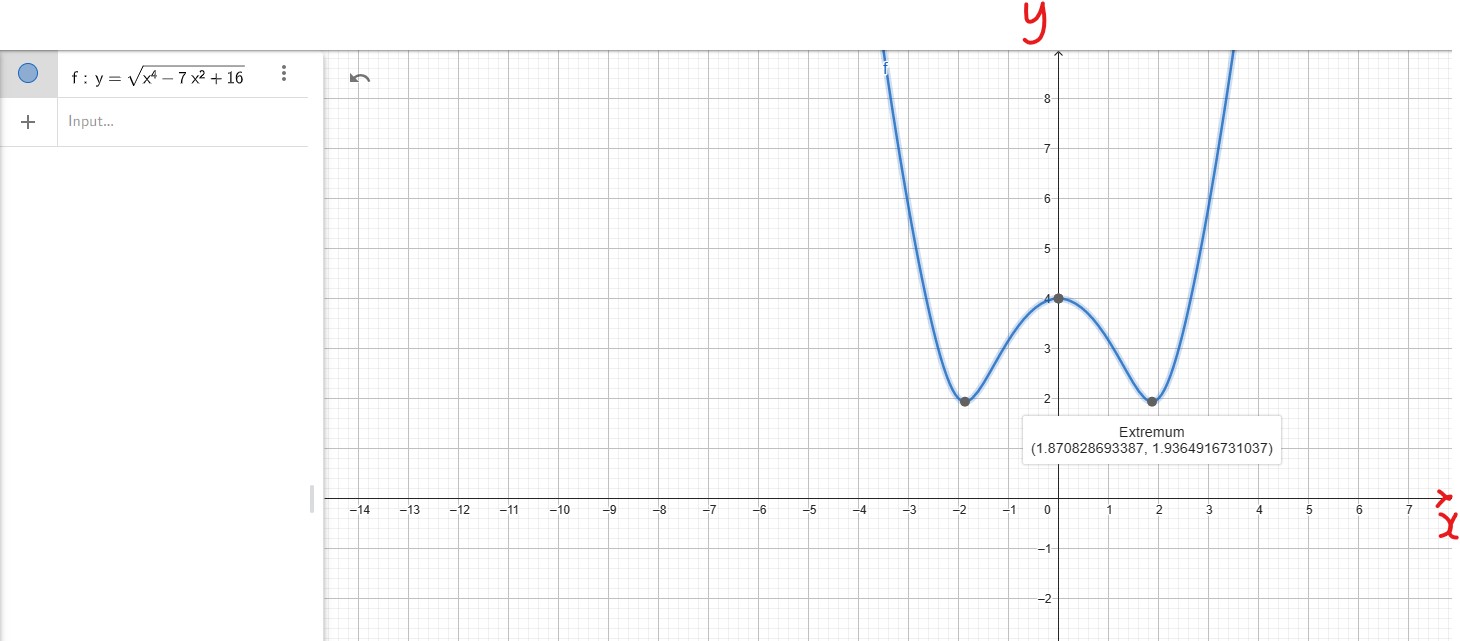
The positive value of x when d is smallest is 1.870828693387 ≈ 1.87
(a.) Express the distance d from P to the origin as a function of x
(b.) What is d if x = 0?
Round to two decimal places as needed.
(c.) What is d if x = 1?
Round to two decimal places as needed.
(d.) Use a graphing utility to graph d = d(x).
For what positive value of x is d smallest?
Round to two decimal places as needed.
$ (a.) \\[3ex] From\;\;P(x, y) \;\;to\;\;Origin(0, 0) \\[3ex] x_1 = x \\[3ex] y_1 = y \\[3ex] x_2 = 0 \\[3ex] y_2 = 0 \\[3ex] d = \sqrt{(x_2 - x_1)^2 + (y_2 - y_1)^2} \\[3ex] = \sqrt{(0 - x)^2 + (0 - y)^2} \\[3ex] = \sqrt{(-x)^2 + (-y)^2} \\[3ex] = \sqrt{x^2 + y^2} \\[3ex] As\;\;a\;\;function\;\;of\;\;x: \\[3ex] y = x^2 - 4 \\[3ex] y^2 = (x^2 - 4)^2 \\[3ex] y^2 = (x^2 - 4)(x^2 - 4) \\[3ex] y^2 = x^4 - 4x^2 - 4x^2 + 16 \\[3ex] y^2 = x^4 - 8x^2 + 16 \\[3ex] \implies \\[3ex] d = \sqrt{x^2 + x^4 - 8x^2 + 16} \\[3ex] d(x) = \sqrt{x^4 - 7x^2 + 16} \\[5ex] (b.) \\[3ex] x = 0 \\[3ex] d(0) = \sqrt{0^4 - 7(0)^2 + 16} \\[3ex] = \sqrt{0 - 7(0) + 16} \\[3ex] = \sqrt{0 - 0 + 16} \\[3ex] = \sqrt{16} \\[3ex] = 4 \\[5ex] (c.) \\[3ex] x = 1 \\[3ex] d(1) = \sqrt{1^4 - 7(1)^2 + 16} \\[3ex] = \sqrt{1 - 7(1) + 16} \\[3ex] = \sqrt{1 - 7 + 16} \\[3ex] = \sqrt{10} \\[3ex] = 3.16227766 \\[3ex] \approx 3.16 \\[5ex] $ (d.) The graph of $x^4 - 7x^2 + 16$ is:

The positive value of x when d is smallest is 1.870828693387 ≈ 1.87
(4.) ACT For functions $f(x) = 5 \cdot 2^x$ and $g(x) = 10x$, the
value of f(3) − g(3) is:
$ A.\;\; 0 \\[3ex] B.\;\; 10 \\[3ex] C.\;\; 70 \\[3ex] D.\;\; 970 \\[3ex] E.\;\; 1,030 \\[3ex] $
$ f(x) = 5 \cdot 2^x \\[3ex] f(3) = 5 \cdot 2^3 \\[3ex] f(3) = 5 \cdot 8 \\[3ex] f(3) = 40 \\[5ex] g(x) = 10x \\[3ex] g(3) = 10(3) \\[3ex] g(3) = 30 \\[5ex] f(3) - g(3) \\[3ex] = 40 - 30 \\[3ex] = 10 $
$ A.\;\; 0 \\[3ex] B.\;\; 10 \\[3ex] C.\;\; 70 \\[3ex] D.\;\; 970 \\[3ex] E.\;\; 1,030 \\[3ex] $
$ f(x) = 5 \cdot 2^x \\[3ex] f(3) = 5 \cdot 2^3 \\[3ex] f(3) = 5 \cdot 8 \\[3ex] f(3) = 40 \\[5ex] g(x) = 10x \\[3ex] g(3) = 10(3) \\[3ex] g(3) = 30 \\[5ex] f(3) - g(3) \\[3ex] = 40 - 30 \\[3ex] = 10 $
